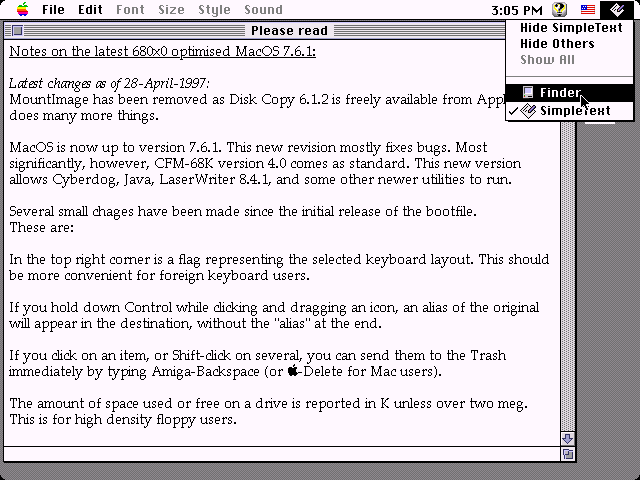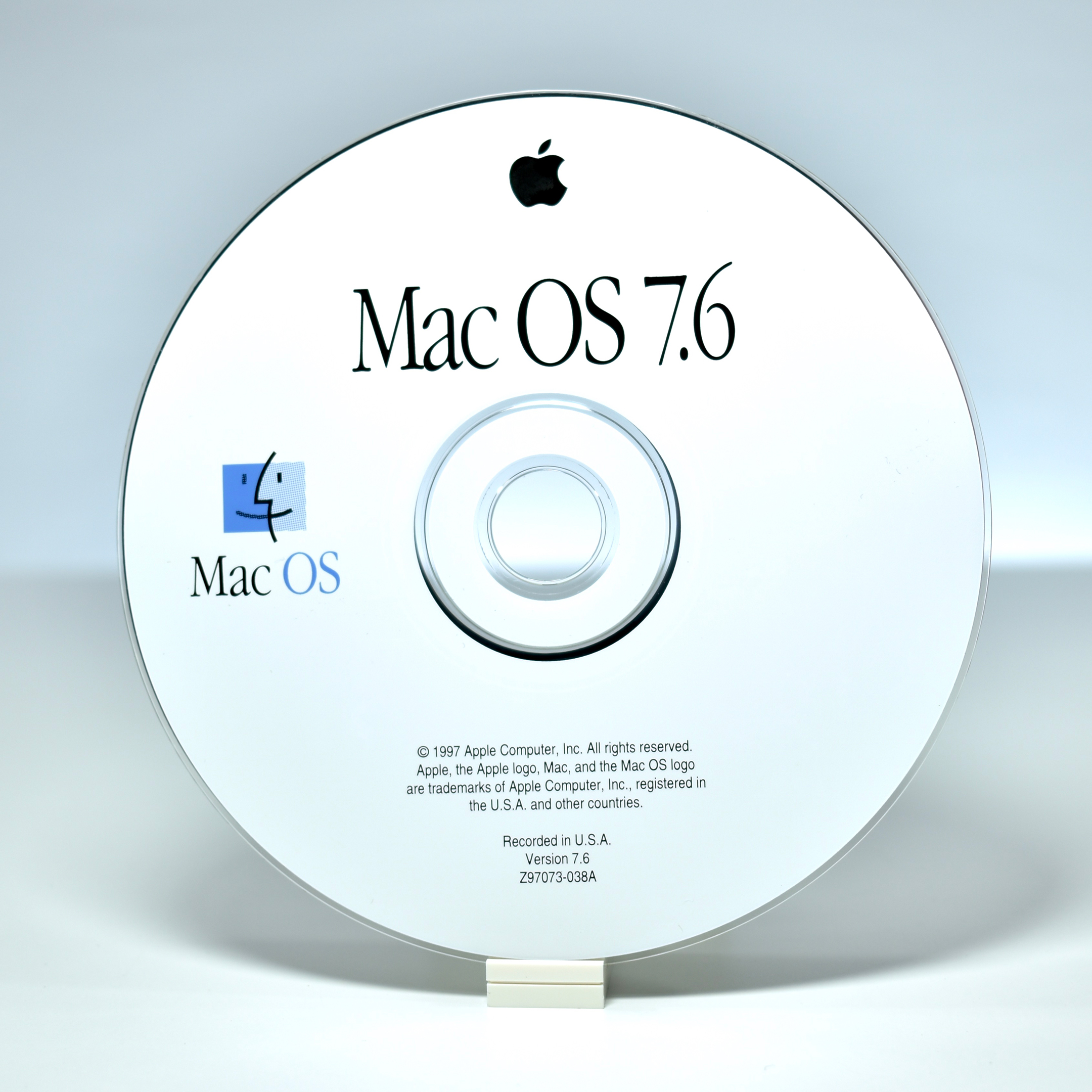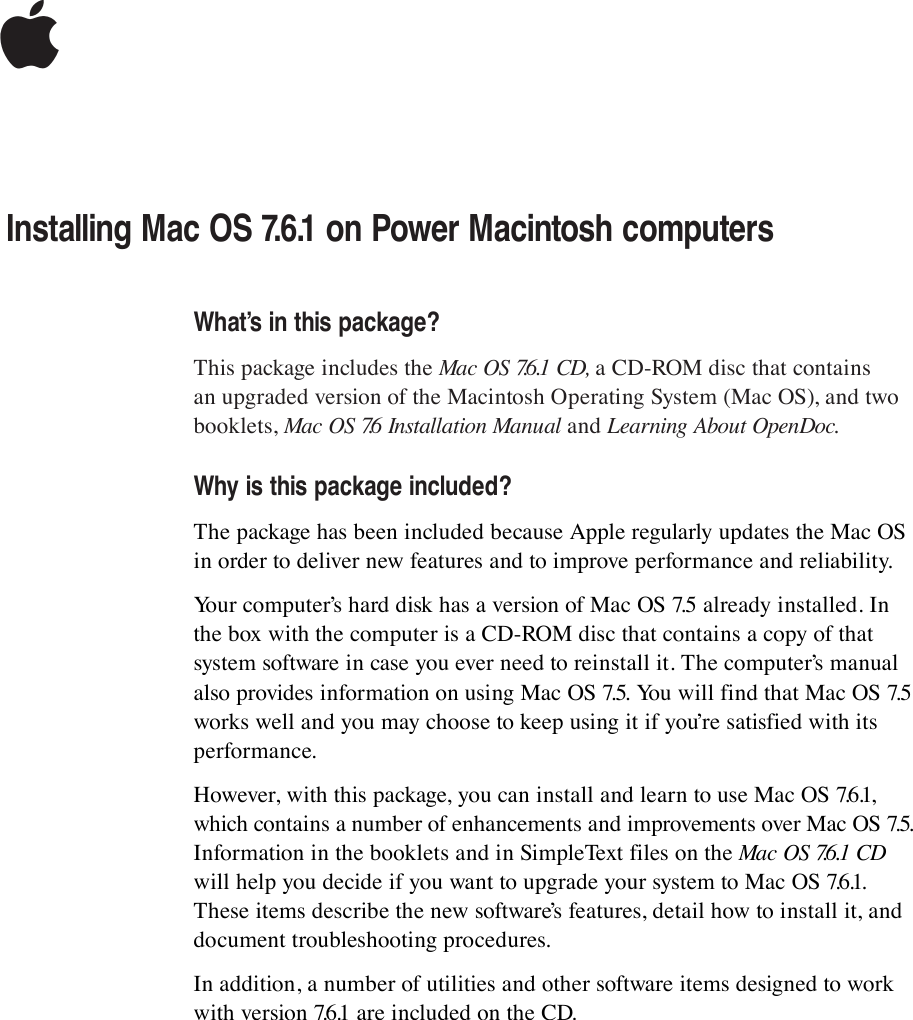

- #MAC OS 7.6 1 HOW TO#
- #MAC OS 7.6 1 MAC OS#
- #MAC OS 7.6 1 INSTALL#
- #MAC OS 7.6 1 UPGRADE#
- #MAC OS 7.6 1 DOWNLOAD#
Select your keyboard layout and click Continue. Select the country you live in and click Continue. You need to configure the latest settings of the macOS Mojave. This may take some time…Īfter copying the installation files, the virtual machine will restart and you will see the following image. Wait while it is installing macOS Mojave on vSphere Hypervisor. Wait while it is are copying the necessary files for macOS Mojave installation.
#MAC OS 7.6 1 INSTALL#
Select the disk to install macOS 10.14 and click the Install button. Select the Install macOS option and click the Continue button.Ĭlick the Continue button to launch the MacOS installation on vSphere ESXi.

Once you have configured the disk name, format and Scheme settings, click the Erase button again.Īfter configuring the hard disk of macOS virtual machine, click on the Done button and then close the Disk Utility. Once you have selected the Virtual SATA Hard Drive Media disk, click the Erase button. To make the disk configuration, select Disk Utility and click the Continue button. Select your macOS system language and click Continue. Run the virtual machine by clicking on the Power on button. Click on the Finish button to continue the installation.Īfter making the necessary configurations on vSphere ESXi 6.7, follow the steps below for installing macOS. The summary information of the 10.14 virtual machine to be installed on vSphere ESXi 6.7 is as follows.
#MAC OS 7.6 1 MAC OS#
In the Create New Virtual Machine window, select Create a new virtual machine for Mojave and click on the Next button.Ĭonfigure macOSMojave1014 for the VM name and set Compatibility to ESXi 6.7, Guest OS Family setting to Mac OS and Guest OS Version to Apple macOS 10.14 (64-bit) and click Next to continue.Ĭonfigure the number of processors to 2 and the RAM size to 4 GB.Ĭonfigure the Network Adapter and then click Datastore ISO File to add the ISO file to the virtual machine.Īlso, configure the Video Card option to Auto-detect settings.įinally, enable the Hardware Virtualization and Performance Counters options for the virtual machine’s processor configuration, and click Next.
#MAC OS 7.6 1 HOW TO#
How to Create a New Virtual Machine for macOSĪfter installing vSphere ESXi Unlocker, follow the steps below to create and configure a new virtual machine.Īfter connecting to vSphere ESXi 6.7 via a web browser, click on Virtual Machines and then Create / Register VM. cd esxiĪfter installing vSphere ESXi Unlocker, restart your server with Reboot command. To setup VMware Unlocker on VMware ESXi, apply the following commands in the terminal. Then click the Open button to connect.Īfter typing your username and password, press Enter.Īfter successfully connecting to the server, use the following commands to extract the zipped file to setup VMware Unlocker. To make an SSH connection to your ESXi server, type the server’s IP address and select SSH.
#MAC OS 7.6 1 DOWNLOAD#
Press Enter on the Enable SSH option to enable SSH.Īfter enabling SSH, download the Putty program from here and open the program. On the ESXi 6.7 server, press F2, and then press Enter on the Troubleshoot Mode Options. Go to the next step to enable SSH on VMware ESXi. How to Install VMware Unlocker on VMware ESXiįollow the steps below to setup VMware ESXi Unlocker.

First, enable SSH and connect to your VMware ESXi server using the Putty program.Īfter connecting with SSH, you need to setup VMware Unlocker to run macOS on VMware ESXi.įollow the steps below to install macOS Mojave 10.14 on your server. If you do not know how to upload files to ESXi, you can browse How to Copy Files to ESXi Datastore.Īfter uploading the files on Datastore, you need to prepare for the virtual machine setup. Download the macOS Mojave ISO file, VM Unlocker and VM Tools from the following links.Īfter downloading the necessary files for the setup of macOS Mojave 10.14 from the above links, upload these files to your vSphere server.

How to Run macOS Mojave on VMware vSphere Hypervisor ESXi 6.7Īfter you install ESXi, you need to download some files needed for Mojave installation.
#MAC OS 7.6 1 UPGRADE#
If you are using the 6.5 version on an existing infrastructure, you can upgrade your infrastructure to a new release by browsing the article called How to Upgrade VMware ESXi. Version 6.7 of VMware ESXi was released on April 17, 2018. In this article, we will install macOS Mojave 10.14 on ESXi. How to Install macOS High Sierra using ESXi.How to Install macOS High Sierra using VirtualBox.How to Install macOS Sierra using VMware.


 0 kommentar(er)
0 kommentar(er)
